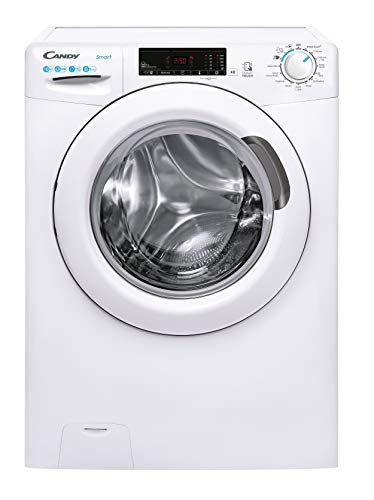This Week's Most Popular Stories About 10kg Front Loader
Why Buy a 10kg Front Loader? The 10kg front-loader is perfect for large loads of laundry, with 13 wash programs that include handwash and plenty of space for large wash cycles. With advanced technology and smart features, it's a perfect partner for your laundry at home. 10kg wash machine are usually slower to clean, do not come with larger capacities, and are susceptible to mildew or mould. However, they are much more energy and water efficient than top loaders. Energy  The major energy expense of a 10kg front loader is electricity for heating water to operating temperature, and to run the motor. These costs can be offset with less energy usage in operation when compared with top-loaders, notably less power used during the agitation process and during spin, as well as less water. Certain machines come with a low-water cycle that uses less water than the cotton cycle. This saves both water and energy. In general, front-loading washers use less soap than top-loaders. The tumbling action of the drum also reduces foamy suds and decreases overflows, without affecting the cleaning action. The door seals as well as the bellows on top-loaders are more prone to wear. The mechanical agitator in a top-loader can also cause significant wear on clothing fabrics. It drags and falls clothes constantly, forcing them to rub against one another. The degree of abrasion can be measured by the amount of fabric accumulating in the dryer's lint filters, as the majority of lint is made up of loose fibers that have been absorbed by clothes during drying and washing. A lot of top-loaders are designed to operate at slower speeds, and could also include the “freshening cycle” to clean the bellows or mechanical gears frequently. Water Top-load washers require an impeller or agitator to force water and detergent through clothing, causing mechanical wear and abrasion. Front-loaders however, use paddles to gently lift and drop clothes into a spinning drum during cleaning, thereby reducing wear. The amount of lint contained in dryer lint filters can be used to estimate the rate of wear. Lint is mostly made up of stray threads that are removed from clothes during drying and washing. Since front-loaders require less water than top-loaders and are therefore less susceptible to leakage. Front-loaders require a bellows or seal to stop water from leaking through the door. These systems aren't maintained as often as top-loaders. Additionally, front-loaders can operate with cold water or hot, and many do so without the need for a heating source, which makes them more energy efficient than top-load machines. This efficiency could reduce operating costs for the same laundry load, especially in locations where energy, water, and detergent are costly.
The major energy expense of a 10kg front loader is electricity for heating water to operating temperature, and to run the motor. These costs can be offset with less energy usage in operation when compared with top-loaders, notably less power used during the agitation process and during spin, as well as less water. Certain machines come with a low-water cycle that uses less water than the cotton cycle. This saves both water and energy. In general, front-loading washers use less soap than top-loaders. The tumbling action of the drum also reduces foamy suds and decreases overflows, without affecting the cleaning action. The door seals as well as the bellows on top-loaders are more prone to wear. The mechanical agitator in a top-loader can also cause significant wear on clothing fabrics. It drags and falls clothes constantly, forcing them to rub against one another. The degree of abrasion can be measured by the amount of fabric accumulating in the dryer's lint filters, as the majority of lint is made up of loose fibers that have been absorbed by clothes during drying and washing. A lot of top-loaders are designed to operate at slower speeds, and could also include the “freshening cycle” to clean the bellows or mechanical gears frequently. Water Top-load washers require an impeller or agitator to force water and detergent through clothing, causing mechanical wear and abrasion. Front-loaders however, use paddles to gently lift and drop clothes into a spinning drum during cleaning, thereby reducing wear. The amount of lint contained in dryer lint filters can be used to estimate the rate of wear. Lint is mostly made up of stray threads that are removed from clothes during drying and washing. Since front-loaders require less water than top-loaders and are therefore less susceptible to leakage. Front-loaders require a bellows or seal to stop water from leaking through the door. These systems aren't maintained as often as top-loaders. Additionally, front-loaders can operate with cold water or hot, and many do so without the need for a heating source, which makes them more energy efficient than top-load machines. This efficiency could reduce operating costs for the same laundry load, especially in locations where energy, water, and detergent are costly.